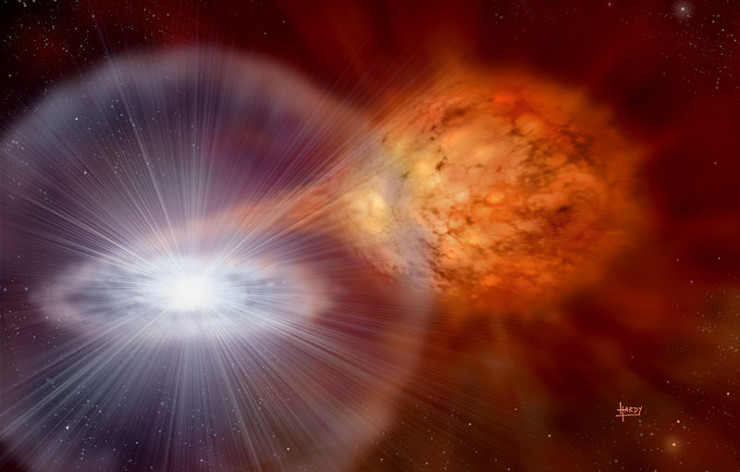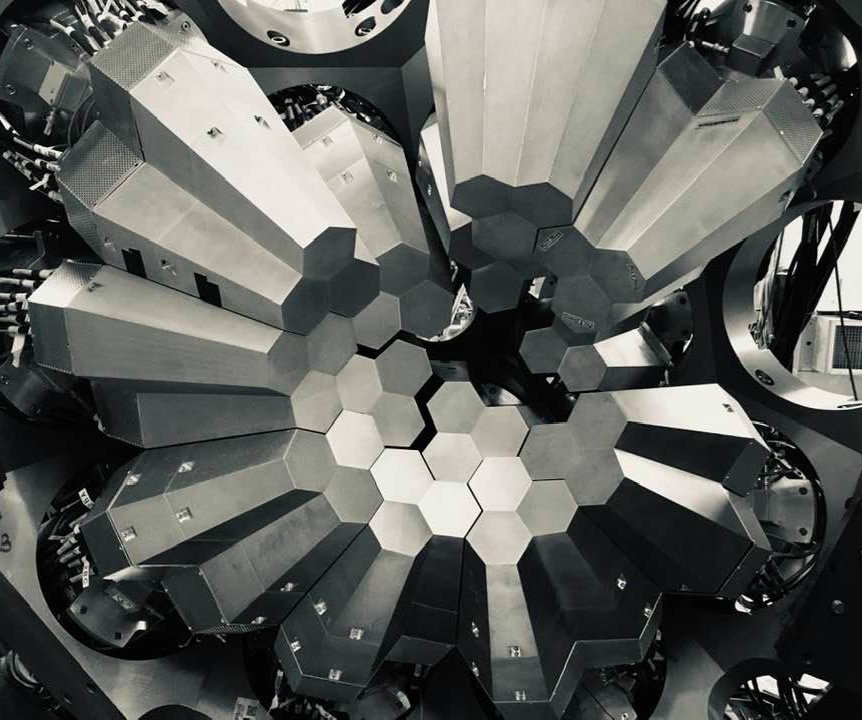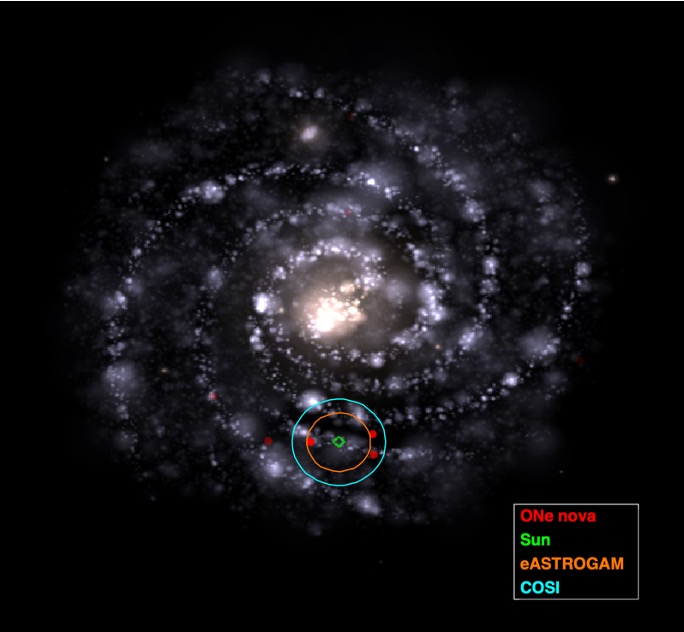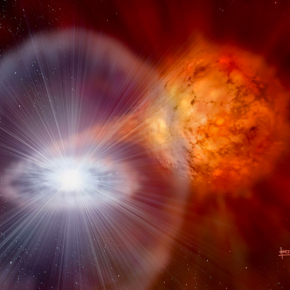GANIL on the trail of Sodium 22 to better understand novae
Using an innovative experimental set-up, a team of nuclear physicists from GANIL has been able to scrutinise with unprecedented precision the process of disappearance of Na 22, a radioactive isotope of sodium. This isotope, which scientists hope to detect in the deflagration of novae, could play a key role in validating theories explaining how these colossal detonations take place.
At the Grand accélérateur national d'ions lourds (GANIL) in Caen, an event occurred that only happens a few dozen times a year in our Galaxy. At the heart of this cutting-edge nuclear physics research facility, a team of scientists reproduced on microscopic scales a stage in one of the most violent events in the cosmos: the novae.
A very rare explosive phenomenon in our nearby Universe
Like supernovae, novae are explosions of stars and, as such, are among the most violent events in the Universe. However, unlike supernovae, which explode completely as a result of gravitational collapse, novae explode only superficially. In fact, only their surface detonates and they appear to us in the sky as a new star, hence the origin of their name "nova". The explanation, which is now widely accepted, involves a process of matter exchange within pairs of stars. One of the two stars would progressively accumulate a larger and larger surface layer as it trapped matter from its companion. Beyond a certain critical mass, the pressure would become so great that it would eventually trigger nuclear fusion reactions and ignite in a gigantic thermonuclear explosion. But how valid is this model ?

Unable to film the event in detail because it was so remote and rare, the scientists, like inspectors, turned their attention to the debris from the explosion. And that's where nuclear physics comes in. During the cataclysm, numerous nuclear reactions took place, giving rise to a host of new nuclei, all of which are signatures of the conditions that prevailed in the nova. According to the current model, some of these atomic traces should be abundantly produced, while others may be absent. Analysing these signatures is therefore a good way of testing the soundness of the scenario proposed by physicists. In short, studying the nuclei formed during these explosions could confirm or challenge our current understanding of novae.
Sodium 22 to probe the nuclear mechanisms of novae
One of the traces explored by physicists in this investigation is sodium 22 (22Na), a radioactive isotope of sodium. Its radioactivity is accompanied by highly characteristic gamma radiation, which has the advantage of being easily discernible by certain space telescopes. In short, the formation and disappearance of sodium 22 will be closely scrutinised the day a nova explodes in our galactic zone, but until then, we need to describe the mechanisms of its formation precisely in the laboratory, in order to make the link between the observed intensity and the nuclear mechanisms at work. This is what the GANIL team has been working on.
More specifically, the researchers were interested in magnesium 23, an element that forms when sodium 22 absorbs a proton. During this transition, magnesium 23 adopts an excited state that can evolve in two directions. Either it de-excites through the loss of a proton and re-forms 22 Na, or it does so by emitting a gamma ray with no possibility of re-forming 22 Na. The lifetime of the excited state of 23 Mg therefore gives us access to the rate at which 22 Na disappears in the nova.

In a similar way to what happens in novae, the physicists bombarded a target of helium 3 (3He) with a beam of magnesium 24 (24 Mg) nuclei to produce excited helium 4 and 23Mg, whose de-excitation they monitored. This results in the emission of gamma rays or protons at well-known angles and energies. The physicists used the AGATA instrument to study gamma-ray emissions and the VAMOS++ magnetic spectrometer to track helium-4 particles. This enabled them to make a very precise estimate of the duration of the excited state of Mg 23, and therefore of its capacity to consume 22Na.
The quality of this measurement unambiguously validates previous studies carried out by other teams, and confirms the discrepancy found with model predictions. But the scientists went even further. They have also shown that this tension between experiment and model was probably just an artefact due to the imprecision of the models for these reactions. With this doubt now removed, all we can do is wait for a nova to ignite in the immediate vicinity of our solar system. The probability of this happening is low, but physicists will be ready. They will be able to count on the space telescope currently under construction, COSI, and perhaps one day ASTROGAM, which will be equipped to detect this famous sodium 22 signal.

More information :
- AGATA infrastructure de recherche nationale : interview with Araceli Lopez-Martens, Director of Research at IJCLab
- AGATA au Ganil : 7 ans de succès
- Le Grand Accélérateur National d'Ions Lourds (GANIL)
- Lien vers l'article publié dans Nature
